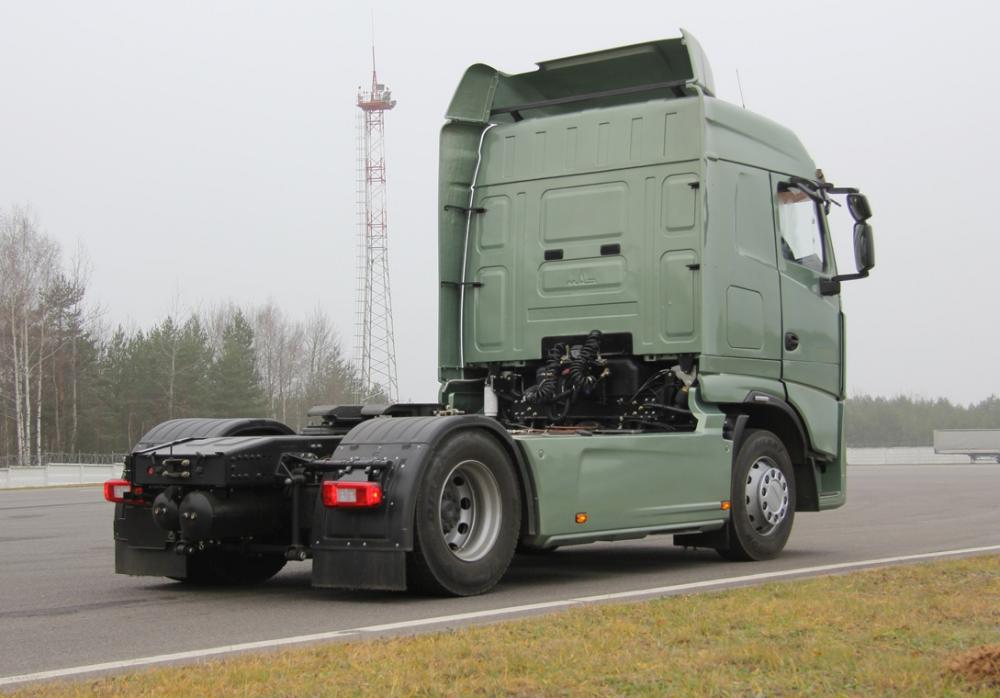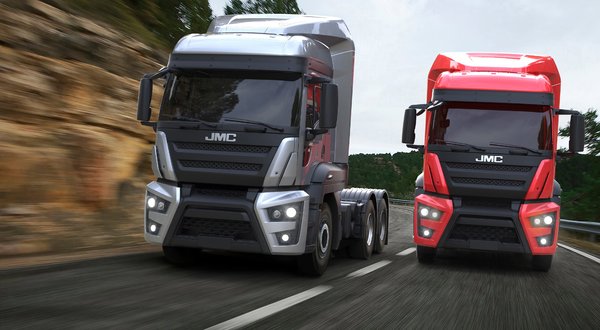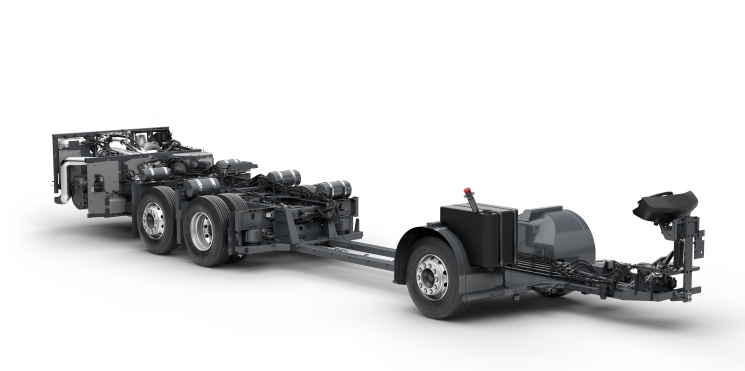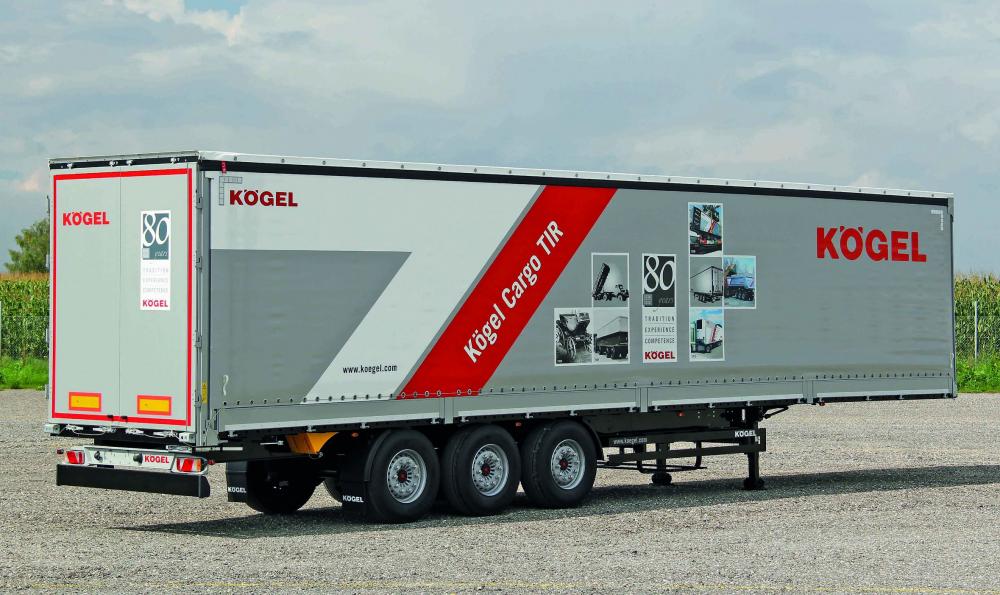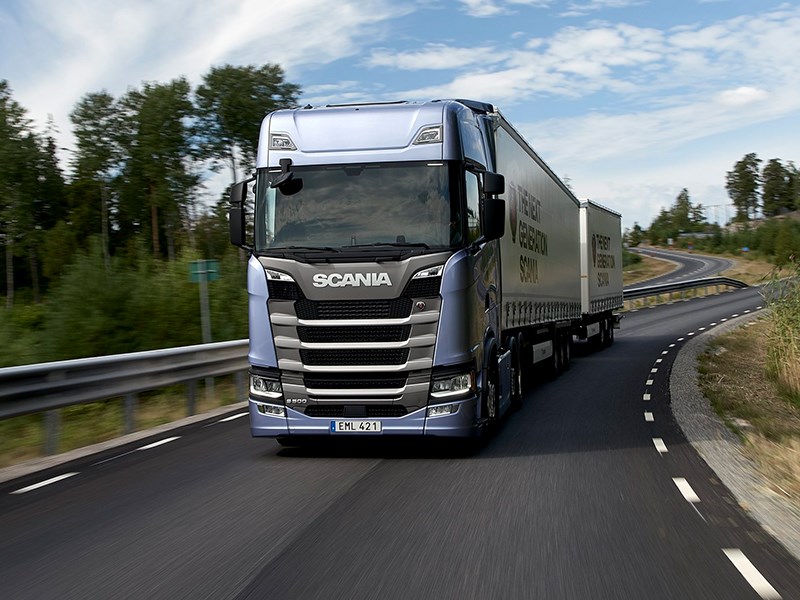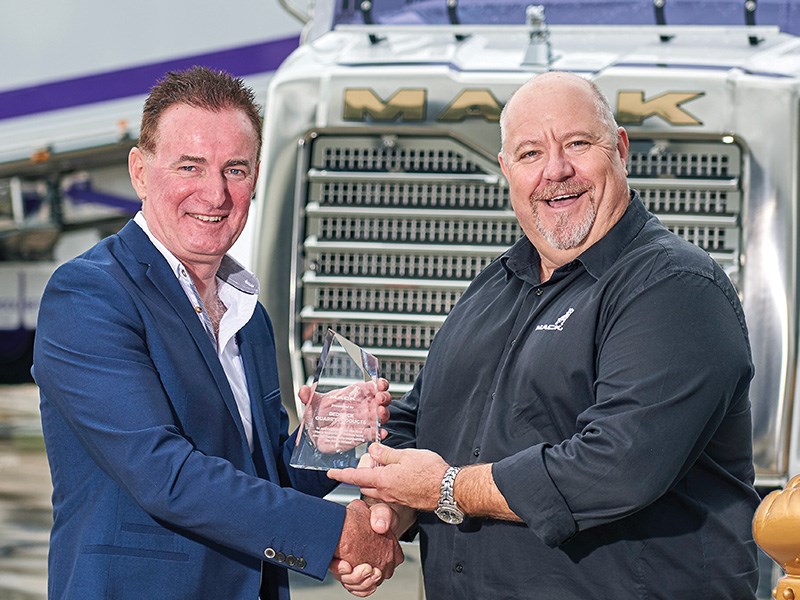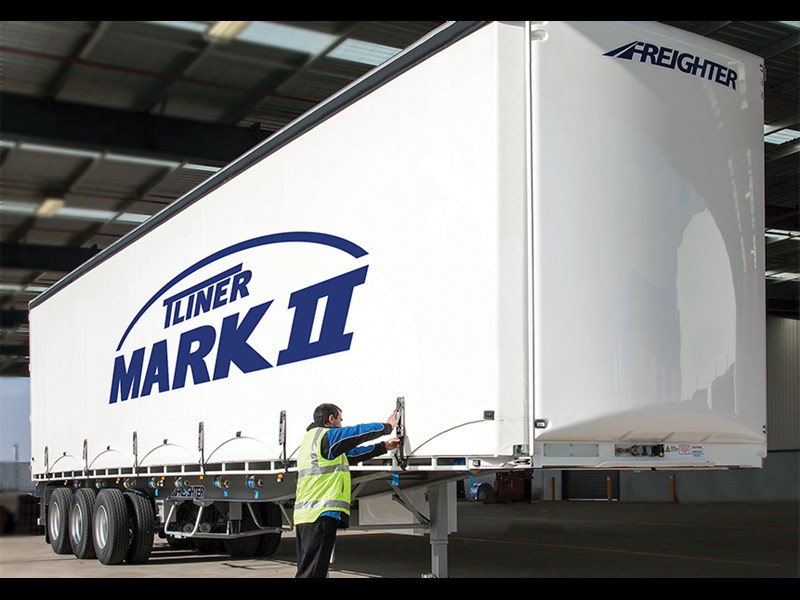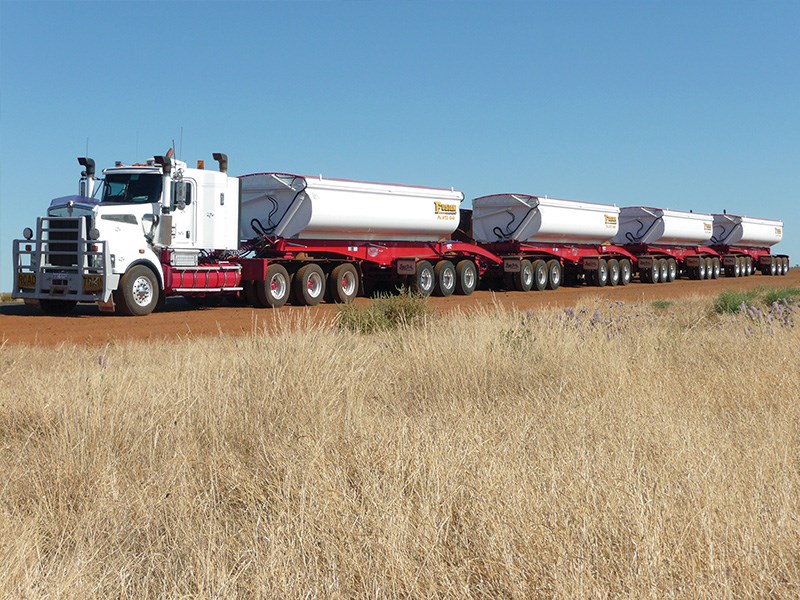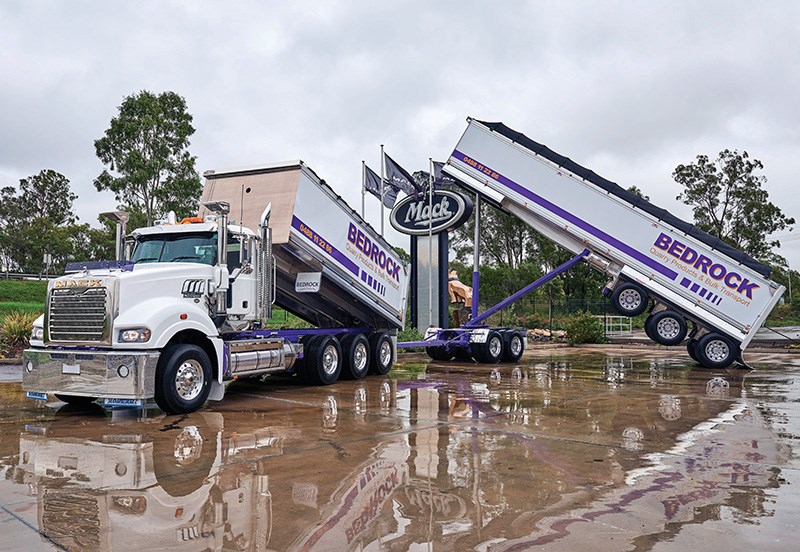
kscarbel2
Moderator-
Posts
18,931 -
Joined
-
Days Won
114
Content Type
Profiles
Forums
Gallery
Events
Blogs
BMT Wiki
Collections
Store
Everything posted by kscarbel2
-
The US college debt bubble is becoming dangerous Rana Foroohar, The Financial Times / April 9, 2017 Student loans are now 90% public, in an eerie echo of the housing crisis Rapid run-ups in debt are the single biggest predictor of market trouble. So it is worth noting that over the past 10 years the amount of student loan debt in the US has grown by 170 per cent, to a whopping $1.4 trillion — more than car loans, or credit card debt. Indeed, as an expert at the Consumer Financial Protection Bureau recently pointed out to me, since 2008 we have basically swapped a housing debt bubble for a student loan bubble. No wonder New York Federal Reserve president Bill Dudley fretted last week that high levels of student debt and default are a “headwind to economic activity”. In America, 44 million people have student debt. Eight million of those borrowers are in default. That’s a default rate which is still higher than pre-crisis levels — unlike the default rate for mortgages, credit cards or even car loans. Rising college education costs will not help shrink those numbers. While the headline consumer price index is 2.7 per cent, between 2016 and 2017 published tuition and fee prices rose by 9 per cent at four-year state institutions, and 13 per cent at posher private colleges. A large chunk of the hike was due to schools hiring more administrators (who “brand build” and recruit wealthy donors) and building expensive facilities designed to lure wealthier, full-fee-paying students. This not only leads to excess borrowing on the part of universities — a number of them are caught up in dicey bond deals like the sort that sunk the city of Detroit — but higher tuition for students. The average debt load individual graduates carry is up 70 per cent over the past decade, to about $34,000. Having just attended the first college preparation meeting at my daughter’s high school, where I was told to expect a $72,000 a year sticker fee for Ivy League and liberal arts colleges, I would feel lucky to get away with just that. This is clearly, as Mr Dudley observed, a headwind to stronger consumer spending. Growing student debt has been linked to everything from decreased rates of first time home ownership, to higher rental prices, to lower purchases of white goods and all the things that people buy to fill homes. Indeed, given their debt loads, I wonder how much of the “rent not buy” spending habits of Millennials are a matter of choice. But there are even more worrisome links between high student debt loads and health issues like depression, and marital failures. The whole thing is compounded by the fact that a large chunk of those holding massive debt do not end up with degrees, having had to drop out from the stress of trying to study, work, and pay back massive loans at the same time. That means they will never even get the income boost that a college degree still provides — creating a snowball cycle of downward mobility in the country’s most vulnerable populations. How did we get here? Extreme politics played a role. In the US, the Koch Brothers/Grover Norquist tax revolt camp of the Republican party has been waging a state by state war on public university funding for years now: states today provide about $2,000 less in higher education funding per student than before 2008, the lowest rate in 30 years. Meanwhile, the subprime crisis cut the ability of parents to use home equity loans to pay for their children’s education (previously a common practice). This left the bulk of the burden to students, at a time when the unemployment rates for young people of all skill levels were rising. The trend is not limited to the US, of course. In the UK and beyond, completely free post-secondary education is a thing of the past. Beleaguered governments are pushing more and more of the responsibility for the things that make a person middle class — education, healthcare and pension — on to individuals. What are the fixes? For starters, we should look closely at the for-profit sector, where default rates are more than double those at average private colleges. These institutions receive federal subsidies but typically spend a minuscule part of their budgets on instruction; in the US, nearly 50 per cent goes on marketing to new students. It looks all too much like an educational Ponzi scheme. Transparency is also key — the student loan market as a whole is hopelessly opaque. In one recent US study, only a quarter of first year college students could predict their own debt load to within 10 per cent of the correct amount. Truth in lending documents would help, as would loan counselling paid for by colleges. Sadly, the agency that is leading the fight on both — the CFPB — is under attack from Trump himself. But the administration will not be able to hide from the student debt bubble. In an eerie echo of the housing crisis, debt is already flowing out of the private sector, and into the public. Before 2007, most student loans were underwritten by banks or other private sector financial institutions. Today, 90 per cent of new loans originate with the Department of Education. Socialisation of risk continues to be the way America deals with its debt bubbles. Would that we considered making college free, as Bernie Sanders suggested. Even Mr Dudley called this “a reasonable conversation”. That way we could socialise the benefits of education too.
-
MAZ Trucks / March 13, 2017 In 2017, MAZ Trucks will begin production of a new range of Euro-6 heavy trucks targeted at the European market. The all-new trucks, including both tractors and vocational models, will be powered with Mercedes-Benz engines. Available in both fleet and owner operator specifications, the new trucks offer greater power and operating economy than their predecessors while including the latest safety features. Equipped with the latest Mercedes-Benz engines and all-new cooling systems, frame construction has also been redesigned for greater rigidity through the use of special alloy high-strength steel. The cabin has been greatly enhanced with new seating, additional storage facilities and on-board computer. With this new range of trucks, MAZ will be able to expand its presence in the Baltic countries, the Balkans and Western Europe. It is assumed that many will be sold in Sweden. "Our Euro-6 trucks are competitive in the European Union both in terms of quality and price. For sure, we soberly assess our prospects and the level of competition, but we really have something to offer to the European buyers, "said assistant sales director Andrei Gurchenko. In the European Union, the truck market is divided among the "Big Seven": DAF, Iveco, MAN, Mercedes-Benz, Renault, Scania and Volvo. "It's not easy to break into this market. But each manufacturer has its own characteristics. So the strengths of MAZ are associated with high performance characteristics and affordable cost. Belarusian trucks are strong and durable - they were created as well for work in the conditions of the Far North. Our vehicles do not get frozen at 20 degrees below zero, "Andrei Gurchenko explained. "We will supply Euro-6 dump trucks and tractors to the Russian market in advance of local producers and simultaneously with the "big European seven", said Gurchenko. “The requirements for Euro-6 class trucks cars are still being determined in Russia, and we are ready to supply ready-made trucks." Full scale production has been preceded by extensive vehicle testing. Euro-6 trucks have a larger number of components which require high mileage testing, from 25,000 to 200,000 kilometers. MAZ engineers continue to perform system durability tests, from engine operation to cruise control. Tests should be completed in the coming months, after which it will be possible to expand production in support of European sales. .
-
- 1
-

-
Big Rigs / April 9, 2017 IF THERE is any industry that isn't afraid of a little rain, it's the trucking industry. Proof of this was the ability of the 2017 Penrith Working Truck Show to carry out its 30th event, with torrential rain in the week leading up to and on the day itself. With final truck numbers up near 200 and the regular turnout of suppliers, the show was not hampered by the weather at all. With Mark and Liz Smith at the helm, their crew of volunteers managed to get the trucks parked up in waterlogged grounds and the trucking community turned out in force to back this prestigious event on the industry calendar. Big Rigs caught up with Mark to get his view on the show and how the adverse conditions affected proceedings. "This is the best show by far, made more impressive by the weather we have had in the week leading up to the event,” he said. "The attendance numbers, of spectators, entrants and trade suppliers, reflects the community support this show possesses. People love the show, they love the museum and it shows by the turnout we have here today. "With thanks to the drivers of all the trucks entered, we were able to get everyone on the ground, albeit with surgical precision. "I have to thank also my team of workers, who spent the week leading up to the show having to brave the wet to get the big tent up and prepare the grounds. I was positive this show would take place rain, hail or shine. "Finally, the way PWTS is run shows the best of spirit and organisation, in an industry which is always under siege, it reflects well to show that the trucking community is still part of the community.” The rain didn't dampen the spirits of Josh and Alex Bravenboer, who made the trip down from Bathurst to attend their first show. "This has been a great day out, we've seen some fine rigs and it's well worth the drive,” Josh told Big Rigs. As for Josh's favourite rig of the show? "It's gotta be that International S-Line.” We tracked down the owner of the neat 1998 model S-Line, one of the last off the factory line, to have a chat about his pride and joy. Chris's dad bought the prime mover back in '05 and it's now in Chris' hands, with some custom touches to make it stand out. Packing a DDEC III motor behind that personalised hood grille, the truck was painted five years ago, although to look at up close it's hard to tell if it rolled out of the paint booth yesterday. Local dealerships were on hand for the day as well, with the latest trucks on the market for both big and little kids to crawl all over. Stillwell Trucks dealer principal Mark Reynolds took some time out to talk about why their firm was involved in the show. "We want to show we are a part of the trucking community,” he said. "We brought eight trucks in for the show, including the Fuso to be used as a stage to help out with the event. Picked for their utility and ability, we decided we needed to bring working trucks, not show trucks, as this is a working truck show.” One of the coolest trucks at the show was the Mercedes 1833, an off-road bonneted truck built for mining and logging applications. Powered by a 330-horsepower Zetros engine, it's the sort of machine that looks like it would go through mountains rather than other them. One of the many suppliers to attend the show was local towing company GRS, bringing an impressive array of recovery gear since 2003. Barry Hunt enjoyed the show as "it's really valuable to the community, it's a chance to catch up with my fellow truckies”. "We don't always get a chance to just sit and chat and if I am seeing someone out on the road it might not be under the best circumstances,” he said. Big Rigs also caught up with Mick Simpson, retired chaser from Wales Truck Repairs, roustabout and excellent breakfast cook. When asked his view on the PWTS, Mick without a thought told us "it's the camaraderie that we see on show here today, a chance to see the trucking industry at its best”. "What I like is the chance to catch up with old acquaintances and make some new ones,” he said. The 2017 Penrith Working Truck Show again showed good reason to stake the claim as New South Wales' premier truck show and exhibited the momentum to create success against adverse conditions. Although the weather was not the best, the trucking community came out in force to support one of the longest-established events on the trucking calendar. With proceeds going to charity and a good time had by all, it showed a little rain won't stop the trucking community. Photo gallery - https://www.bigrigs.com.au/news/penrith-does-it-in-the-wet/3164736/
-
Big Rigs / April 9, 2017 IT'S LATE, you roll into a large regional centre not too far from one of our capital cities. The log book, but not always your body, tells you it's time to sleep. You pull up on the edges of a known industrial area, no houses in three directions for several kilometres. You pull off the road onto a broad, very broad, verge and park next to a couple of empty trailers. Visible around the corner on a side road are several other similarly parked trucks. Unbeknown to you, you've been spotted by a police patrol who for reasons of their own don't stop and advise you that you can't stay parked where you are, for any longer than an hour. At 1.30am, the following morning loud banging on the driver's door wakes you up. It's the same police patrol who drove past, by their own acknowledgement, many hours earlier. You are advised that you can't park there for more than an hour and you are instructed to move your vehicle. As you build up air, you are issued with a $121 infringement notice. You explain that the only two commercial truck stops in the area and the two nearby road train assembly areas are full. You ask where can you park and get some sleep. There is no answer to your question but you are reminded you've been told to move your vehicle. The police move on, ignoring all the other parked vehicles. It's a common scenario that's arguably played out every night right around the country. But where can you park up and grab a few hours sleep when the welcome, but size-limited commercial facilities and the sign-posted, but invariably scarce, parking bays are full? Not in a built-up area in any city or town anywhere in the country it would seem. The Australian Road Rules 1999 (ARR) define a built-up area as: In relation to a length of road, means an area in which either of the following is present for a distance of at least 500m or, if the length of road is shorter than 500m, for the whole road: buildings, not over 100m apart, on land next to the road; street lights not over 100m apart. The ARR have been adopted by most states and territories, with variations of course. Local government areas, the city, local, regional and shire councils, right across Australia have their own variations on that too. Generally it appears built-up areas are defined in the various state and territory traffic acts, traffic codes and related regulations and provide the legislative authority under which police can act. When Big Rigs spoke to our driver's boss, himself a regular inter and intrastate driver, he was furious and was contemplating a formal complaint to the police. He wasn't so concerned with the fine, although the $121 was a bit of a waste, as he acknowledged his driver had arguably done the wrong thing. He was more concerned for the impact of the disruption to his driver's mandatory fatigue management break. His driver is just like most of you out there who are regularly reminded of the fatigue management provisions by industry bodies, legislators and enforcement agencies who preach the benefits and wisdom and the need to observe the requirements. And yet provide few if any facilities where a driver can legally and safely park without being disturbed at some crazy hour of the morning to be pinched for a parking offence and to basically be told to move on. It's one thing to lecture and preach and harp on about fatigue management, but it'd be a better idea to talk less and to direct energies and efforts, and our tax dollars, into providing adequate, regular and well-sized truck parking bays. And our driver? Tired as he was, he meandered about the regional centre for several hours looking for an unlit parking spot. He eventually found one when he spotted another rig pulling out of a roadside parking bay around sunrise. Chased up by his boss, and after barely snatching an hour's snooze, our driver hit the road, to then run late and arguably, still fatigued, all day.
-
Owner/Driver / March 30, 2017 The inaugural Spirit of the Hume truck display attracted about 70 trucks to Broadford, Victoria. Broadford celebrated its historic links with the Hume Highway by hosting the Spirit of the Hume truck display in February. The inaugural truck show attracted about 70 trucks, including two from Tasmania, on February 18 and 19. Historic Commercial Vehicle Club of Australia (HCVC) President, Alan Taylor, was pleased with the show’s success. "I like the theme, Spirit of the Hume," Taylor says. "We’re right on the Hume here, and Broadford is one of the towns that you originally went through when you were running up and down the Hume." Broadford resident Archie Baines was instrumental in establishing the new truck show. He enlisted Annette Chapman, Ash Chapman, Clive Smith and David Bell to help organise the HCVC event. "They did an excellent job," Taylor says. "Everything that they organised turned out excellent." Many other volunteers and HCVC members also helped over the weekend. Some of the trucks dated back to the 1920s, including Robert Parker’s 1929 Thornycroft A3. The event was an opportunity for truck owners to show off their quality restorations. Peter Berry’s 1954 Albion, Bill Smith’s 1961 Leyland Buffalo, Ken Keating’s 1966 International R200, Paul Thomson’s 1970 Ford F8000 and Ken Midson’s 1980 International TranStar were among the many eye-catching restored trucks. Norm Cornfoot brought a touch of Hollywood to Broadford with his 1992 Kenworth T900 which is painted in the style of the Snowman’s Smokey and the Bandit truck. Truck lovers also appreciated unrestored trucks like Jake Goodwin’s Autocar from the mid-1970s. About 115 people attended a dinner dance which many considered the highlight of the weekend. National Road Transport Hall of Fame CEO, Liz Martin, travelled from the Northern Territory to speak at the dinner. Organisers hope the 2018 Spirit of the Hume will attract even more trucks to Broadford next year. .
-
Hino Motors Press Release / March 29, 2017 New wallpapers are available on DAKAR Gallery page. http://www.hino-global.com/dakar/gallery/wallpaper.html
-
Truck News / April 7, 2017 The Canadian Trucking Alliance (CTA) says it is giving a cautionary thumbs up to the new Canadian Free Trade Agreement (CFTA) that was announced today and will come into action on July 1. “While we are encouraged, time will tell whether the new processes established to identify, prioritize and negotiate standardized rules will be more effective than previous attempts to increase the level of harmonization of trucking regulations,” said CEO of the Canadian Trucking Alliance, David Bradley. During the CFTA announcement, Brad Duguid, Ontario’s minister of economic development and growth, who chaired the multi-government internal trade committee, made specific reference to the lack of harmonization that exists regarding truck driver hours of service rules across the country. A centerpiece of the agreement, which replaces the 1995 Agreement on Internal Trade, is a new regulatory reconciliation process. The CFTA establishes a Regulatory Reconciliation and Cooperation Table – a federal-provincial-territorial body which will oversee the new process. “We have maintained for many years that the processes and institutions Canada has been relying on to address provincial trade impediments and regulatory differences are in need of re-energization, modernization or replacement,” said Bradley. “The new table might provide that focus,” he added. “Nevertheless, I would prefer to remain encouraged at this point…We look at this as a new opportunity for a fresh look at some of our long-standing concerns or at least a better way forward.” Bradley also said it is imperative that Canada address the inefficiencies and complexities caused by the various provincial regulatory differences governing everything from truck weights and dimensions, to truck safety rules, to environmental standards. He also says trucking is unique in the sense that the industry is subject to both federal and provincial regulation. “We need more harmonization not only between the provinces but between the provinces and the federal government as well.” Bradley also says reducing internal trade barriers and reconciling internal regulatory differences is essential in the context of the country’s trade relationship with the United States and the upcoming NAFTA negotiations. “Given the current lack of domestic regulatory harmonization and cohesiveness, Canada – at least when it comes to trucking issues – often does not speak with one voice, which makes it difficult, if not impossible, to achieve true North American or bilateral standards,” he said. “The Americans don’t want to deal with 10 provinces, three territories and the federal government. They would like us to discuss these issues with a single voice.”
-
I read that as well Paul. https://townhall.com/tipsheet/cortneyobrien/2017/04/08/syria-survivor-praises-trumps-airstrike-on-cnn-asks-critics-where-they-were-duri-n2310853 http://www.vox.com/policy-and-politics/2017/4/7/15217832/aumf-trump-syria-congress ------------------------------------------------------------------------------------------------------------------- (NBC News / April 9, 2017) South Carolina Republican Sen. Lindsey Graham said Syrian President Bashar al-Assad's decision to launch warplanes from Shayrat Airfield just hours after it was bombed by U.S. cruise missiles was a "huge mistake." "Here's what I think Assad's telling Trump by flying from this space: 'F you,'" Graham said on "Meet The Press." "And I think he's making a huge mistake because if you don't worry about what Trump may do on any given day, then you're crazy." "I'm glad Trump did this..............There's a new sheriff in town," Graham said. Graham seems arrogantly out of touch. A country from the other side of the world attacked a sovereign country. I'm sure Assad is miffed, to say the least. If another country attacked an Air Force Base in the sovereign United States, many Americans would be saying 'F you' as well, and we'd of course retaliate militarily. But then there's that double standard. Every country has its own unique issues. If you don't like it, then don't go there. Graham clearly is under the misunderstanding that the entire world is under United States administration, and our "Sheriff" has the right to ride into any town do as they see fit.
-
MACKs 1972 full product line
kscarbel2 replied to 41chevy's topic in Antique and Classic Mack Trucks General Discussion
https://www.bigmacktrucks.com/topic/30240-your-mack-line/ https://www.bigmacktrucks.com/topic/30224-your-mack-off-highway-truck-line/#comment-168466 -
We'll never find out for sure. I believe Assad handed over his chemical weapons as part of a deal brokered by the the US and Russia. If these were in fact chemical weapons in a rebel munitions warehouse, their origin has many possibilities. After I saw U.S. supported rebels cut the head off of a child on the tailgate of a pickup truck, that had a profound effect on my thought process.
-
We don't factually know what happened (and we never will). Syria is a sovereign country on the other side of the world. Which is to say, it's not a town of the United States........Trump has no jurisdiction there. As Trump said hundreds of times during the campaign, we need to stop being the world's policeman. And as I travel the world, I'm constantly told they'd like the US to stop it. There are many countries equally as bad, including Somalia, Sudan/South Sudan and Myanmar......but we're not raising a finger there. And we all know our success stories in Afghanistan and Iraq. Syria......it's not our neighborhood. These people have been fighting each other for two thousand years. Perhaps, we should back away and thus force the leaders of that neighborhood (Arab League/GCC countries) to step up to the plate and take care of their neighborhood for once. I'll never forget, in (first) Iraq war, the Arab countries had the west do all the dirty work.
-
BBC / April 7, 2017 According to the War Powers Resolution of 1973, the president "in every possible instance shall consult with Congress before introducing United States Armed Forces into hostilities or into situations where imminent involvement in hostilities is clearly indicated by the circumstances". The president is required to confer with Congress until US forces are no longer needed. But the commander-in-chief is also given "leeway to respond to attacks or other emergencies" in a limited way, according to the Council of Foreign Relations. Senator Rand Paul said: "While we all condemn the atrocities in Syria, the United States was not attacked.” “The President needs Congressional authorization for military action as required by the Constitution." “Our prior interventions in this region have done nothing to make us safer and Syria will be no different.”
-
Volvo introduces 2017-2018 FH/FH16 Ocean Race Limited Editions
kscarbel2 replied to kscarbel2's topic in Trucking News
The standard FH is built with a traditional grille. D16-equipped FHs are equipped with the optional grille in the picture. -
China market Ford Cargo heavy tractor arrives
kscarbel2 replied to kscarbel2's topic in Trucking News
Ford to introduce China market Cargo heavy tractor at Shanghai auto show (http://autoshanghai.auto-fairs.com/general-information/). . -
I like the demeanor of former UK ambassador to Syria Peter Ford. He doesn't point a finger and slam anyone, but rather he speaks with logic, reason and experience. .
-
Volvo Bus Press Release / April 3, 2017 Volvo Buses is now starting the global launch of its latest chassis powered by the 8-litre Volvo engine. The Volvo B8R and Volvo B8RLE replace the top-selling Volvo B7R and B7RLE, which saw a production run exceeding 40,000 units and sales in 65 countries. Higher power output, the same low fuel consumption, longer oil-change intervals and a high safety level are some of the features that characterise the new chassis models. The Volvo B8R and B8RLE have been marketed in Europe since 2013 and in 2017 Volvo Buses will continue rolling out the new models globally. Buses on the Volvo B8R chassis are already being built in India. This summer several Asian markets are in line such as Malaysia and Thailand, along with Australia, the Middle East, Africa and South America. “With the introduction of the Volvo B8R/RLE we are reinforcing our global offer with a modern and flexible product range that gives our customers even better scope for operations that boost life cycle cost-efficiency,” says Håkan Agnevall, President of Volvo Buses. Flexible configuration Just like their predecessor, the Volvo B8R and the low-entry Volvo B8RLE version are designed to form the foundation for both city buses and intercity buses, as well as tourist coaches and school buses. A robust structure using tried and tested components in the chassis and driveline create the prerequisites for high reliability and availability. The buses are also equipped with the Volvo Bus Electronic System, which means they are factory-prepared for future software upgrades. Fuel-efficient driveline The engine is the Volvo D8, Volvo’s own 8-litre common rail diesel producing 330 hp and up to 1200 Nm of torque. Despite a 40 hp increase in power, the new engine is at least as fuel-efficient as its predecessor. The oil change interval has been extended from 30,000 to 40,000 km in city traffic, and from 50,000 to 80,000 km for buses in long-distance operations. High level of safety The Volvo B8R and Volvo B8RLE were designed to meet high demands on driving properties, comfort and safety. The standard equipment includes features such as Volvo’s electronically controlled disc brakes and ESP (Electronic Stability Program).The Volvo B8R can also be specified with I-Coaching, a system that helps the driver drive more safely and fuel-efficiently by providing continuous feedback. The chassis will be built in the Volvo Buses factories in Borås, Sweden and Curitiba, Brazil, for local final assembly and bodybuilding. Facts, Volvo B8R and Volvo B8RLE Volvo B8R: Length 10.1–13.1 m. Width 2.4 m. Wheelbase 4.5–7.4 m. Gross Vehicle Weight (GVW) up to 19 tonnes. Volvo B8RLE: Length 10.2–12.5 m. Width 2.5 m. Wheelbase 4.5–6.8 m. Gross Vehicle Weight (GVW) up to 19 tonnes. Driveline: Volvo D8, in-line six-cylinder diesel engine producing 330 hp/1200 Nm in Euro 5 or Euro 3 configuration. Choice of several transmissions. Brakes and stability enhancement systems: Volvo EBS, ABS, Brake Blending, Hill Start Aid, Brake Assist, Volvo Electronic Stability Program (ESP), integrated hydraulic retarder. Driver’s station: Volvo’s ergonomically designed driver’s station, easy to view instruments and individual steering wheel adjustment.
-
Commercial vehicle rental company Hama Polska, a subsidiary of the DBK Group, has announced its purchase of 1,100 new Kogel semi-trailers for its DBK rental fleet. The order from Hama Polska comprised 900 new Kögel Cargo units and 200 new Kögel Mega semi-trailers to extend its rental services in Poland, Germany, Austria, Sweden and Spain. Under the umbrella of DBK Rental services, Hama Polska operates over 1,000 prime movers from various manufacturers, as well as a large selection of Kögel semi-trailers are available for long- or short-term rental. The company’s customer service programme includes maintenance and repair services in Poland and abroad, a tyre service and a mobility guarantee, with the provision of a replacement vehicle in the event of an accident of a breakdown. The 900 Kögel Cargo semi-trailers feature Kogel’s VarioFix perforated steel external frame equipped with 13 pairs of lashing rings for load-securing, each ring affording 2,000 kg of tensile force. The body meets the body stability standards of DIN EN 12642 Code XL, making any additional load-securing unnecessary for form-fitted loads. Thanks to the use of the standard Kögel integral roof tarpaulin, there are no straps left hanging down when the roof is open because these are integrated into the roof tarpaulin. This means that the straps cannot get snagged up when loading and unloading. An optional lateral steel bracket across the entire width and locking cam protection mounted centrally on the end plate of the frame are fitted as forklift protection. The individual accessories for each trailer also include five pairs of receiving slots at the rear corner posts, as well as a rain guard on the end frame for suitable clamp fittings with eyelets, a tarpaulin rope with two brackets on the front wall and many other features. The 200 Kogel Mega semi-trailers are ideal for conventional standard tasks as well as for use as a high-volume transport vehicle. The internal clearance height of three metres makes these high-volume units ideal for just-in-time business in the automotive sector. Loading and unloading stacked pallet cages is simple, thanks to the standard mechanical/hydraulic lifting roof. This increases the side and rear through-loading height to more than three metres. The standard Kögel integral roof tarpaulin also guarantees improved handling with an open roof. Thanks to the roof straps being integrated in the roof tarpaulin, sagging straps are a thing of the past. This eliminates the straps snagging on the load. Mega-trailers are certified in accordance with DIN EN 12642 Code XL .
-
Scania to showcase S500 in Brisbane Trade Trucks AU / April 4, 2017 The UK-specification prime mover will be the highlight of Scania's display at the Truck Show Even though the commercial launch of Scania’s S 500 series in Australia is "way off", the company is bringing an example of its New Truck Generation range for display at the 2017 Brisbane Truck Show. The Scania S 500 prime mover was launched in Paris last year and has won two accolades in Europe so far – the International Truck of the Year 2017, and 1,000-point European heavy vehicle comparison test. The UK-specification truck will be brought out only for the Truck Show and will return to Europe immediately after the show. Scania says it will conduct local market evaluation before launching the the New Truck Generation range in Australia. Scania Australia MD Roger McCarthy says the company decided to "fast-track the delivery of an example of the S 500 to Australia, even though the commercial launch of the New Truck Generation Scania range is still some considerable way off". "The truck on display is representative of a specification that could be offered to the Australian market once the New Truck Generation Scania is launched here," he says. The Scania S 500 on display will be shown in 6x2/2 configuration with a pusher axle (with single wheels) and rear drive axle with dual wheels. It has a 13.0-litre SCR Euro 6-compliant six-cylinder in-line engine, producing 500 hp (373 kW) at 1900 rpm, and 2550 Nm (1882 lb/ft) of torque between 1000 and 1300 rpm. The 500 hp engine drives through the Scania GRS905R direct drive gearbox, controlled by Scania Opticruise automation, which provides three performance modes (economy, standard and power). The Opticruise gear-changing is up to 45 per cent quicker than before owing to the adoption of a new layshaft brake. It is fitted with the latest high output R 4100D Scania Retarder, plus an exhaust brake, offering seamless deceleration while preserving the service brakes. The rear driven axle uses a 2.59:1 final drive ratio, reflecting the lower European speed limit for heavy goods vehicles of 85 km/h, and is equipped with a differential lock. The Highline model on display also offers additional headroom inside thanks to the cab’s completely flat floor. Scania S 500 also features ABS/EBS safety systems with advanced emergency braking, electronic stability control, adaptive cruise control, Scania lane departure warning, and the "world-first" driver’s side window curtain airbag. Other features include: climate control, electric roof hatch, a 1000mm wide expandable lower bunk, a 700mm upper bunk, Scania Communicator, LED head and tail lamps, LED daytime running lamps, and LED fog lamps. The Brisbane Truck Show will also feature a selection of the current generation of Scania prime movers including the current flagship, the R 730 V8, a G 480 prime mover and a P 310 8x2 rigid. "We will also be demonstrating the advantages of Scania Maintenance with Flexible Plans, which combined with Scania Optimise, provides fleets and owners with a deep and user-friendly insights into the most cost-effective and efficient way to maximise the profitability of their Scania assets," McCarthy says. "The Scania stand at the Brisbane Truck Show will provide all truck operators with the perfect opportunity to gain a clear understanding of efficient, sustainable, safe and driver-friendly trucking. .
-
Higher productivity needs drive local manufacturing in Australia
kscarbel2 replied to kscarbel2's topic in Trucking News
PBS: All axles and payload Big Rigs / April 7, 2017 Making use of the efficiencies of Performance Based Standards (PBS), Sydney company Bedrock Quarries has put to work a nine-axle combination low tare combination that is reaping significant payload increases. The Mack Super-Liner Tridem is powered by Mack's MP10 685hp engine and the back end is bogey drive with a liftable pusher axle. The Sloanebuilt tipping body and five-axle trailer give low tare while having the strength to handle quarry and delivery work. As quarries in the Sydney region have become depleted, gravel supplies must come from further afield and the Bedrock operation hauls material from New South Wales' Central and Southern Coast districts. Traditional truck and dog combinations had a payload of 33 tonnes or less, the new PBS rated combo has increased payload to 48 tonne. "That's about one and a half of the previous truckloads, and that's a huge advantage for our business,” says Mick Colley, director of Bedrock Quarry Products and Bulk Transport. "We're constantly looking at ways of increasing our productivity.” Bedrock has a Mack fleet because "quarry work can be rough and Mack is combining their toughness with the latest in innovation and technology, which means they're the obvious choice for my business,” Mick reckons. Through the Performance-Based Standards (PBS) scheme, VCV Sydney West offered Bedrock the option of higher productivity and the best possible payload through efficiencies now available through PBS. Mack Trucks Australia vice-president Dean Bestwick said Mack Trucks was excited and proud to continue to partner closely with Bedrock Quarry Products and Bulk Transport. "Bedrock has made the decision, time and time again, to carefully select Mack to build their trucks. "Their fleet of 13 is comprised entirely of Mack trucks, including three three-axle dogs, five PBS four-axle Dogs, two PBS five-axle dog trailers, one 25 metre B-Double, an eight-wheeler rigid and the newly acquired Super-Liner Tridem.” "It's really satisfying to produce customised trucks that are a perfect fit for the job with unmatched reliability, durability and application excellence; ultimately increasing productivity and profitability for our customers,” Dean said. As other customers also look to increase payload, Dean said the delivery of the PBS Mack Super-Liner Tridem showcases Mack's commitment to application excellence while using both the latest in truck technology and matching it with innovative possibilities that have arisen under PBS. "Bedrock Quarry Products and Bulk Transport prides themselves on prompt, efficient and reliable transportation of quarry products to each and every customer and Mack stands behind our trucks and our customers in everything they do.” The Mack Super-Liner is fitted with the liftable pusher axle with HLM2 suspension, to allow reduced tyre wear and drag when empty running. The National Heavy Vehicle Regulator (NHVR) approved and PBS compliant combination will allow Bedrock Quarry Products to carry an estimated combined payload of 48 tonne, across an overall vehicle length of just over 24 metres. The Super-Liner features a custom Sloanebuilt Trailers aluminium tipping body and five-axle dog trailer, ensuring the lightest tare weight while still achieving maximum strength and durability. The Mack Super-Liner Tridem tipper-dog PBS Combination Engine: Mack MP10 SCR 16 litre 685hp @2300lb/ft torque Transmission: Mack mDrive 12 speed overdrive AMT Front axle: Mack FXL 14.6 (14,600 lbs) Rear axles: Meritor RT46-160GP with HLM2 pusher Brakes: S Cam with Centrifuse brake drums GVM: 68.5 tonnes Cubic Capacity: 22.1 cubic metres Trailer: Five -axle PBS compliant by Sloanebuilt Trailers. . -
Owner/Driver / April 4, 2017 A record 38 trailer manufacturers will feature at the 2017 Brisbane Truck Show, a feat attributed in part to the success of Australia’s PBS scheme. Despite the last of the automakers packing up shop, Australian truck and trailer manufacturing industries are burgeoning as our need for higher-productivity vehicles evolves. This year’s Brisbane Truck Show highlights a distinct uplift in trailer manufacturing in Australia, resulting in a record number of exhibitors. The show will host 38 innovative trailer manufacturers, all of whom are finding great success locally despite the presence of low-cost imported trailer options. Show organiser Heavy Vehicle Industry Australia (HVIA) attributes a lot of this success to the maturation of the National Heavy Vehicle Regulator’s (NHVR) Performance-Based Standards (PBS) scheme. HVIA chief executive Brett Wright says PBS offers a specialty area of manufacturing that many trailer builders are taking advantage of. "PBS is an enabler of innovation and productivity," Wright says. "Because PBS applications are by their very nature bespoke, it makes it possible for hundreds of trailer and body builders to succeed creating niche products, where the supply of more generic products becomes a challenge of staying cost-competitive. "Australian trailer productivity is the envy of the world over, with the safety record of our B-double’s to the amazing capacity of our road trains and B-triples. "Our Performance Based Standards scheme allows innovative engineering to achieve much greater productivity from trailers with even greater safety benchmarks." One of a kind Wright points out that Australia is home to a burgeoning truck and trailer industry, in part due to the unique requirements of trucks in service down under. "Australia is home to three major truck manufacturing plants and hundreds of the world’s most innovative trailer, body, component and equipment manufacturers," he says. "You couldn’t have a more professional heavy vehicle industry than we have in Australia, delivering innovative solutions with world-class design, engineering and manufacturing." A competitive hurdle for manufacturers in Australia is the challenge of competing with low-cost imported trailers; however the PBS scheme creates niche opportunities. The NHVR’s chief engineer, Les Bruzsa, notes that not only do PBS-approved combinations provide opportunities for local trailer manufacturers, they also reduce the number of trucks on the road. "PBS vehicles deliver improved productivity and safety through innovative vehicle design," Bruzsa says. "Simply, this means fewer trucks on the road and overall safer vehicles to transport more than two billion tonnes of freight around Australia each year." Pay-off Custom trailer builders, like WA-based Bruce Rock Engineering, are investing in the research and development of high-productivity trailer options and it’s becoming a large component of their business. Director Damion Verghoot explains that the decision to invest in PBS-approved trailers has paid off despite the lengthy process. "We put a lot of work into the PBS trailers probably three years ago now," Verghoot says. "With the super quads, super triples, research and development is important. "But that’s really come to fruition and paid off in the last 12 months. "We do everything in house and the amount of effort we put in was huge, so the wheels were slow to turn but it's kicked off now." As the PBS scheme evolves, it should allow for even more local manufacturing options, despite concerns about overseas manufacturers taking aim at the custom side of the market. "It’s probably a hard thing, because if PBS becomes more of a norm, that’ll lead itself to more numbers and possibly more overseas manufacturing," Verghoot says. "But we’ve put well over 200 PBS trailers on the road so far, and I think Australia’s trailer industry is innovative enough that there will always be a market for locally manufactured PBS gear." The NHVR’s PBS data confirms the outlook of trailer manufacturers, with an impressive 1397 combinations approved last year as well as the relative monopolisation of the dog trailer market. "PBS has been growing at a rate significantly higher than predicted and the number of PBS combinations almost quadrupled since 2013 when the NHVR took over the management of the scheme," Bruzsa says. "In respect to PBS within the domestic trailer manufacturing sector, we saw a significant growth in the dog trailer segment with more than 90 percent of all new 4-axle and 5-axle dog trailers being PBS approved in 2016." Burden While the regulator has taken the PBS scheme to great heights, the process still involves access issues according to the HVIA, which, if ironed out, could lead to further spikes in trailer manufacturing. "The regulator has a challenge working with road managers to allow these combinations on their local networks, however, the selling point is that higher productivity combinations reduce truck movements and they are putting an even greater onus on safety," Wright says. On top of access concerns, the HVIA has called on the regulator to address PBS-related safety concerns. "It is in everyone’s best interests that the PBS scheme continues to grow," Wright says. "It allows the transport industry to move freight far more efficiently. "The payback, however, has to be adhering to benchmark safety requirements. "HVIA has identified that the PBS scheme is at risk given the age loophole and low, outdated braking standards required for approval. "Should at any point we witness a serious accident involving one of the poorer performing PBS vehicles there is a high risk that the scheme could be negatively impacted." For Queensland-based tanker manufacturer, Holmwood Highgate, PBS trailers account for a third of their business. Sales manager Ian Williamson says the quality of locally manufactured custom trailers is a big draw card for buyers. "We’re local and we’ve been around since 1950, so quality is a big factor for us," he says. "The Australian trailer manufacturing industry is always going to be there because a lot of people out there want quality and they don’t want the low-quality issues." While a large portion of Holmwood Highgate’s work is already PBS related, Williamson says it expects it’ll increase further as the process is simplified. "At the present time PBS accounts for probably about 25 to 30 per cent of our work," he says. "We expect that to improve but the biggest problem with the PBS scheme at the present moment is there is a lot of red tape that comes with it. "A lot of people are starting to look at PBS combinations in the 26-metre B-double and 30-metre A-double space, as well as with rigids and dogs. "That requires a lot of development, but we’ve got the approvals." The NHVR is optimistic the PBS scheme will continue to improve manufacturing prospects, safety, and productivity, benchmarking Australian road transport against the rest of the world. "It has now been acknowledged by most of the manufacturers that PBS is the most progressive heavy vehicle design scheme in the world," Bruzsa says. "In terms of trailer design and component selection PBS sets a higher benchmark for manufacturers and opened up new opportunities for designers. "It is likely that the scheme will continue to grow at a strong rate. "It will be exciting to see how far the boundaries of vehicle innovation can be pushed to boost vehicle productivity without experiencing a reduction in safety. Breakdown by state of PBS applications, amendments and variations approved in 2016 Victoria 60% Queensland 19% New South Wales 15% South Australia 4% Tasmania 1% Big productivity: Less trips, bigger loads Sydney-based Bedrock Quarry Products & Bulk Transport has made the move to PBS-approved truck and trailer combinations, with the aim of rolling over its entire fleet to PBS rigs. Director Mick Colley put his 25 years of transport industry experience to use when finding a way to tackle an increasingly competitive industry and growing compliance and operational costs. The solution? Pull more, with fewer trucks. "The solution is less truck movements," Colley says. "When, for instance, you’re looking at a PBS quad-dog compared with a three-axle dog, you can move the same amount with five loads in a quad-dog or six trips in a three-axle dog. "An extra tonne is worth around $12,000 per year to the company, so if you carry an extra six to seven tonnes in a load then that’s a big difference." The company first started running PBS-approved trucks three years ago and since that time, Colley says the fleet of high productivity vehicles has afforded efficiency not possible with off-the-shelf setups. "In 2014, we started getting involved with PBS, and we’ve now got nine PBS vehicles," he says. "We have five quad-dogs, three five-axle setups, one Mack Super-Liner Tridem pulling a five-axle and then an A-double that will arrive sometime in April. "We’re still doing the same rates we did on three-axle dogs, but you can do more. "We’ve got other ideas and the regulators are very keen on looking at our ideas to reduce truck movements. "Within two or so years, we think we’ll be a 100-percent PBS fleet." .
-
California $52 billion transportation deal includes fuel tax overhaul
kscarbel2 replied to kscarbel2's topic in Trucking News
California fuel taxes are headed up, way up Keith Goble, Land Line (OOIDA) / April 7, 2017 The California Legislature voted on Thursday, April 6, to approve a 10-year, $52 billion transportation funding deal. Professional drivers are pegged as major contributors for the plan via a 20-cent diesel tax increase. By a one-vote margin the Senate voted last night to approve the bill. The 27-11 vote cleared the two-thirds supermajority necessary to advance. Assembly lawmakers followed suit shortly thereafter. The chamber needed 54 favorable votes to secure passage to the governor’s desk. The final tally was 54-26 to adopt. Democratic Gov. Jerry Brown and leading lawmakers of his party unveiled the funding plan in the past week. The deal is estimated to raise $5.2 billion annually for state and local roads, trade corridors, and public transit. The funding package includes a mix of higher taxes and fees. It is described as a “first step” toward making roadways safer and providing a boost to the state’s economy. Assemblyman Rudy Salas Jr. of Bakersfield was the lone Democrat to vote against the bill. He cited concerns about additional tax burdens on his constituents. “The families I represent drive too far to jobs that pay too little.” Assemblyman Mike Gipson, D-Carson, acknowledged the bill is not perfect. However, he said it ensures the state is moving forward. “Senate Bill 1 passes the smog test,” Gipson commented following the vote. Republicans at the statehouse, including Sen. Ted Gaines of El Dorado, said funds already available to the state were a better option. “And how are the people supposed to believe that this money will actually go to transportation? This state is already diverting a billion dollars in weight fees away from our roads every year.” SB1 would raise nearly $3.8 billion annually mostly via increases in the gas and diesel tax rates. The state’s current tax rates are about 38 cents per gallon, according to the American Petroleum Institute. The excise components making up the tax rates are 27.8 cents for gas and 16 cents for diesel. The bill from Sen Jim Beall, D-San Jose, would increase the excise rate on gas by 12 cents to raise $24.4 billion. The excise rate on diesel would be increased by 20 cents to raise $7.3 billion. The diesel money would be designated for freight, trade corridors and goods movement. In exchange for collecting more in excise taxes, California’s current collection method for fuel taxes would be abandoned. No longer would the state Board of Equalization annually adjust the fuel tax rates. Instead, price-based tax rates would be restored. In addition, the 1.75 percent sales tax applied to diesel purchases would be increased by 4 percent to 5.75 percent. The increase is estimated to raise $3.5 billion. Revenue from the diesel sales tax increase, however, would not directly benefit trucking. The money would be deposited into an account for transit and intercity rail projects. The Owner-Operator Independent Drivers Association supports efforts to raise revenue for transportation work in the state. However, the group opposes any plan that calls for truckers to foot more of the responsibility to help bail the state out of its funding hole. Additional components in the funding plan would increase annual vehicle registration fees up to $175 and apply an annual $100 fee for zero-emission vehicles. The fees would raise $1.3 billion. All tax and fee rates would be indexed to inflation to allow for increases in future years. In an effort to appease truckers, another provision in the bill would restrict future regulations on emissions related to commercial vehicles. Critics say that exempting trucks from clean air rules has no place in a package to fix roads and improve transit. Beall said earlier in the week at a hearing that the provision would “do no harm.” He said it is merely intended to help an industry that would be heavily taxed. Also included in the bill is reference to SCA2/ACA5 – a proposed constitutional amendment to be included on the June 2018 ballot. Voters would decide whether to ensure all revenue is spent for transportation purposes. The Legislature approved the constitutional amendment question after adding language to include truck weight fees in the protection. Since 2011, weight fees have been diverted from roads to the state’s general fund to pay down transportation-related general obligation bonds. The fees collected top out at $2,271 per truck.
BigMackTrucks.com
BigMackTrucks.com is a support forum for antique, classic and modern Mack Trucks! The forum is owned and maintained by Watt's Truck Center, Inc. an independent, full service Mack dealer. The forums are not affiliated with Mack Trucks, Inc.
Our Vendors and Advertisers
Thank you for your support!


